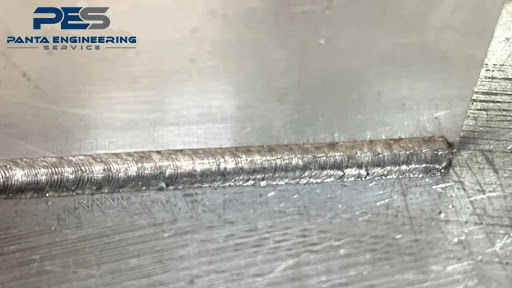Common problems and solutions of laser welding of aluminum alloys
Sep 24, 2024Before discussing the technical details of laser welding of aluminum and aluminum alloys, we need to understand the basic working principle of laser welding machines. Laser welding machines use high-intensity laser beams to locally heat the welding area to a molten state to achieve precise metal connections. Its main components include lasers, optical systems, and welding heads. The laser generates high-energy lasers, the optical system focuses the laser beam to the welding site, and the welding head ensures the accurate positioning of the laser beam. Laser welding machines can provide a concentrated and high-power heat source, reduce the heat-affected zone and deformation, and thus improve welding quality and efficiency. Especially when welding aluminum, the precise control function of these devices can effectively deal with common problems in aluminum welding, such as pores and cracking. Modern laser welding machines are also equipped with intelligent control systems that can adjust process parameters in real time to ensure the stability and consistency of the welding process.

Aluminum and aluminum alloys are widely used in construction, transportation, automobiles, electronics, packaging, and aerospace due to their light weight, high strength, and corrosion resistance. With the development of technology, the aluminum alloy welding process has been improved. Laser welding is a welding technology commonly used in the market. It has the advantages of high-power heat source concentration, small heat-affected zone, less deformation, energy saving and consumption reduction.
In the daily welding process, due to the special properties of aluminum, it is difficult to control the laser focus and molten pool when laser welding aluminum and aluminum alloys; when the welder sets the process parameters improperly or lacks rich experience, problems such as pores, cracking and deformation, blackening of welds and non-fusion of undercuts may occur, which seriously affect the welding quality and performance. Next, we will introduce the difficulties and solutions encountered in welding aluminum.
The main problem encountered when using laser welding aluminum is pores. During the welding process, the laser beam causes the molten pool metal to fluctuate. When the gas trapped in the metal expands and overflows, pores will appear; in addition, the aluminum oxide film will hinder the bonding between metals, absorb moisture and easily produce impurities, which will promote the formation of pores.
The generation of pores will lead to weaker weld strength, reduced corrosion resistance, and unsightly welds. In general, the following measures are recommended:
Adjust the appropriate laser power to ensure uniform heat input.
When welding thin plates, it is recommended to increase the speed to reduce the time for gas to expand in the metal; when welding thick plates, the welding speed can be reduced to ensure performance when the material is preheated.
Chemically or mechanically clean the weld surface to reduce the impact of impurities on the welding quality.
Control the use of shielding gas or flux to reduce oxidation and reduce the amount of gas formed.
Due to the high temperature generated during welding, aluminum will expand and contract rapidly and produce stress points. If the weld solidification interval is too short and the stress points are not released, they will cause aluminum to crack and thermal cracks to appear; in addition, oxidation and thermal cracks will easily occur when the weld protection effect is not good.
To avoid this situation, we need to control the heat during welding, fully preheat the weldment before welding, and adjust the shielding gas.
The blackening of aluminum in laser welding is mainly caused by insufficient laser power, the focal length is not adjusted to the appropriate value, or the laser lens is damaged. In this case, the energy of the laser fails to reach the melting threshold of the oxide layer on the surface of the aluminum material, causing the aluminum to mix with air and impurities, resulting in blackening of the welded part.
In order to better obtain the quality and aesthetics of welding, during the aluminum welding process, PES LASER recommends first selecting the appropriate power and adjusting the correct focal length; secondly, you can also check whether the protective lens is damaged.
When laser welding aluminum, discontinuous, rough and uneven welds are a typical phenomenon. The main reasons are too large assembly gap of welds, laser spot offset, insufficient laser power and excessive defocus.
First, we can reduce the root gap of the welded workpiece: second, adjust the focus of the laser beam to determine the correct spot position; in addition, we can also ensure the welding quality after aluminum melting by increasing the laser power and adjusting the correct focal length.
Due to the particularity of aluminum, other problems will also be encountered during laser welding. Before welding aluminum and aluminum alloys, we must not only consider the stability of welding quality, but also the appearance of welding. With the improvement of laser technology and aluminum manufacturing technology, the process of laser welding aluminum has also been greatly improved, providing a solid foundation for creating lightweight metal structural components in the fields of automobiles, aerospace, etc.
Nasıl yardım edebiliriz?